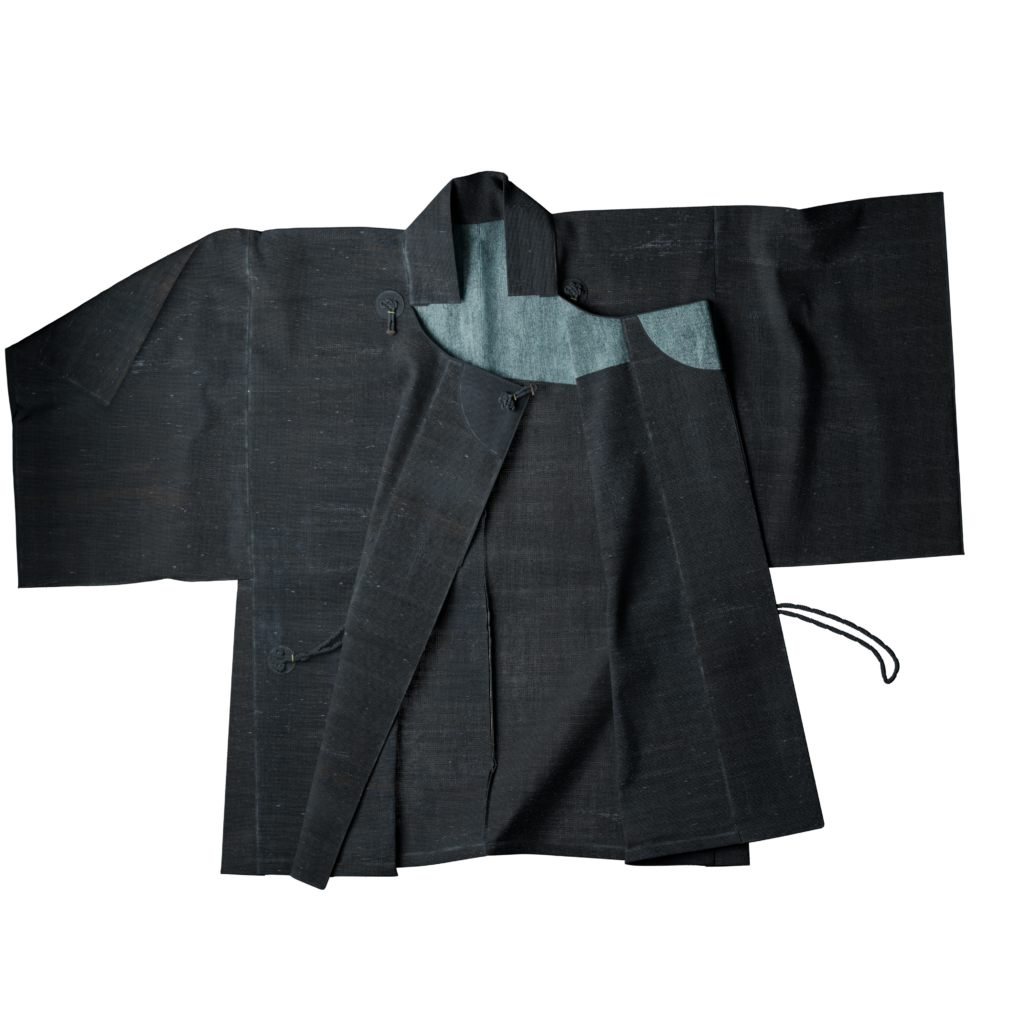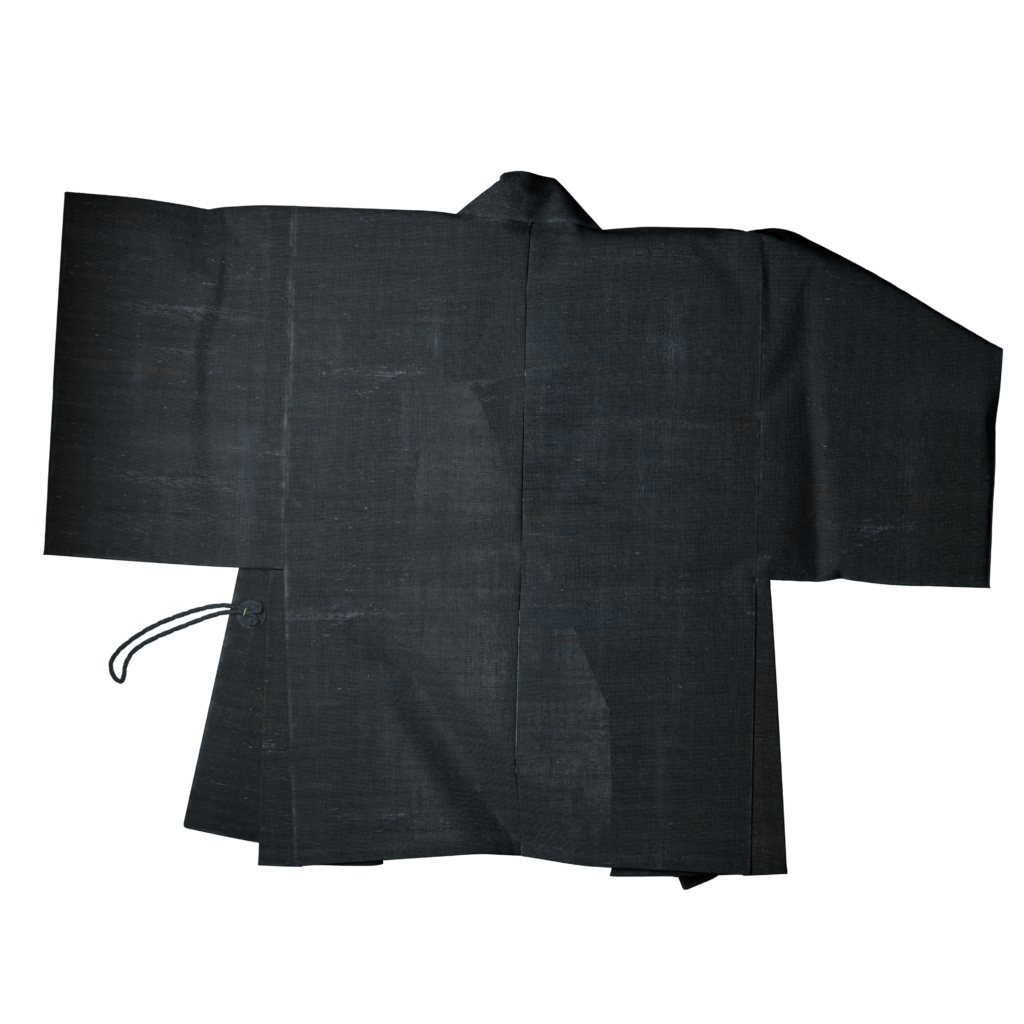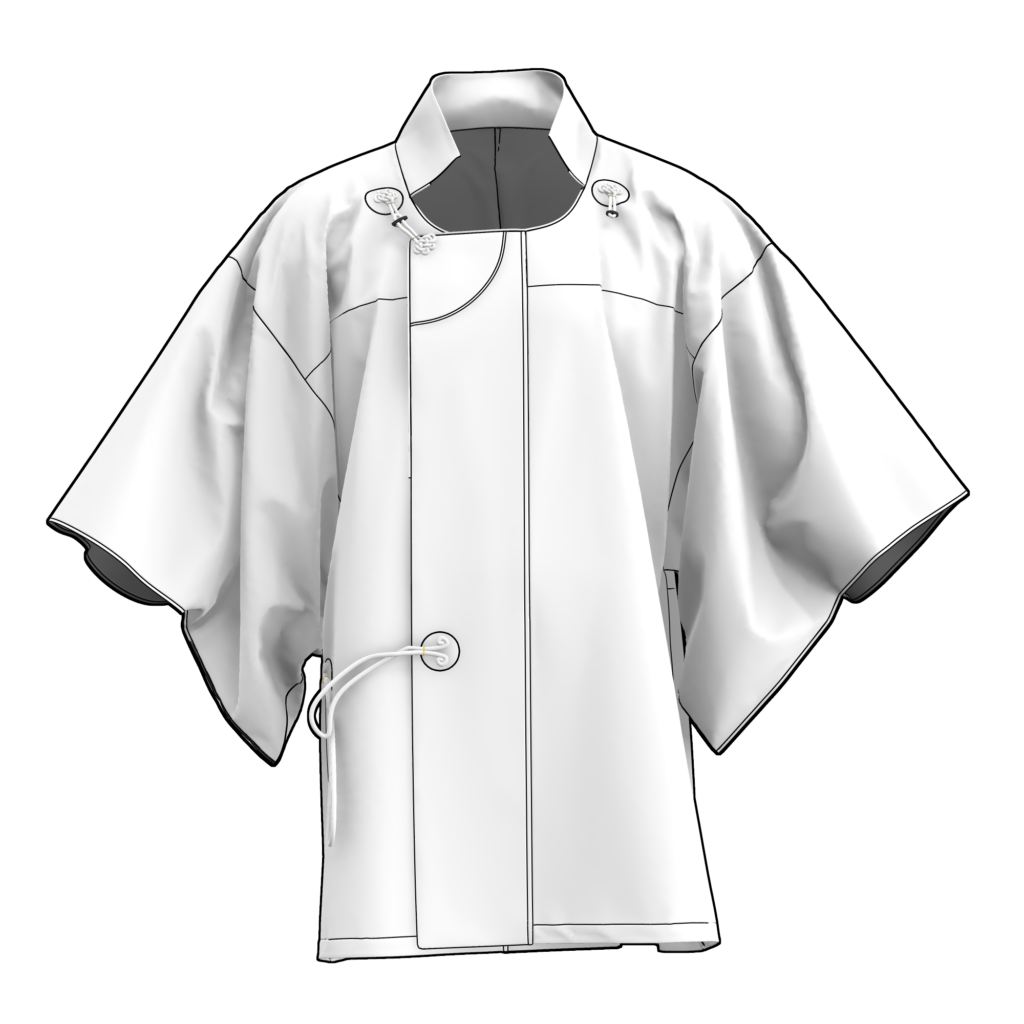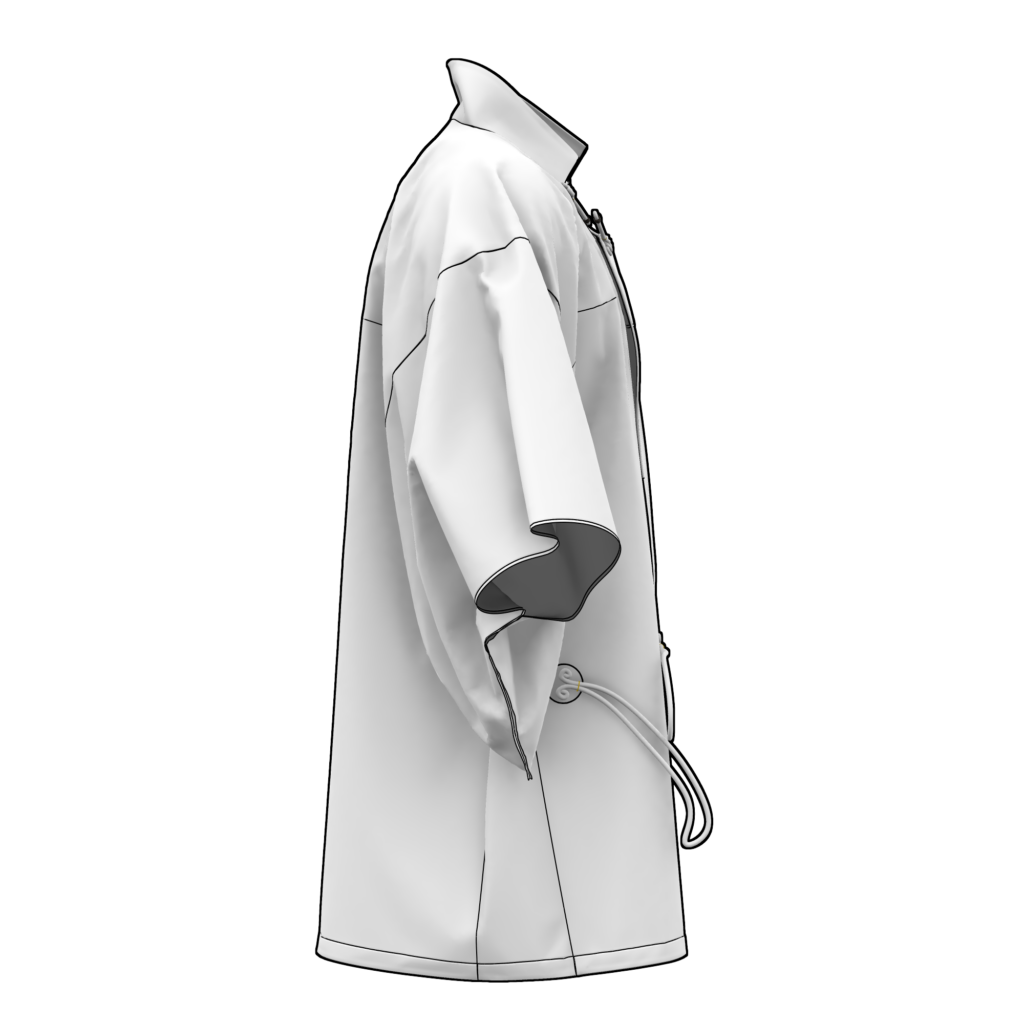year
18th-19th centurycurrent location
ATOPOS cvc, Athens







Shifu Kimono Overcoat
year
18th-19th centurycurrent location
ATOPOS cvc, AthensA woven paper kimono overcoat. This coat is made from one layer of woven cloth. It has no lining, except for the back neck facing and some binding on the edges of the front opening and on the sleeves.
The fabric used for this garment is called shifu (紙布), which translates to “paper cloth”. It is made by slicing sheets of paper and hand-twisting them into threads/yarns for weaving. The entire garment is a telltale shade of indigo blue with some areas of wear, which could mean it was dyed with natural indigo. The outer fabric likely underwent 8-10 dips into the indigo vat, while the lighter linen facing was likely 5-6 dips. The outer fabric was woven with a cotton warp and paper weft and was probably woven and then dyed as a length before being constructed into a garment (this is evidenced by white dotted yarns visible on frayed areas). Paper has been stacked to stiffen the facings and collar. These stacked interfacings have been made from thin sheets of recycled ledger paper of varying weights—four on the left side and seven on the right. These facings, stitched to the outside of the garment, contain thicker card-weight paper with writing on it, leading to the conclusion that this is recycled paper. The coat features cotton kumihimo ties in the shape of frog clasps and neck connectors. It can be opened at the front or closed for warmth, with paper inside the frog clasps. The entire garment, including the handmade paper elements, was likely woven and then stitched together by hand.
Courtesy of ATOPOS cvc, Athens.
Research by Daphne Mohajer va Pesaran
Pattern making by Erisa Ibrahimi. 3D modelling by Martina Ponzoni. Texturing and rendering by Virgile Biosa.
